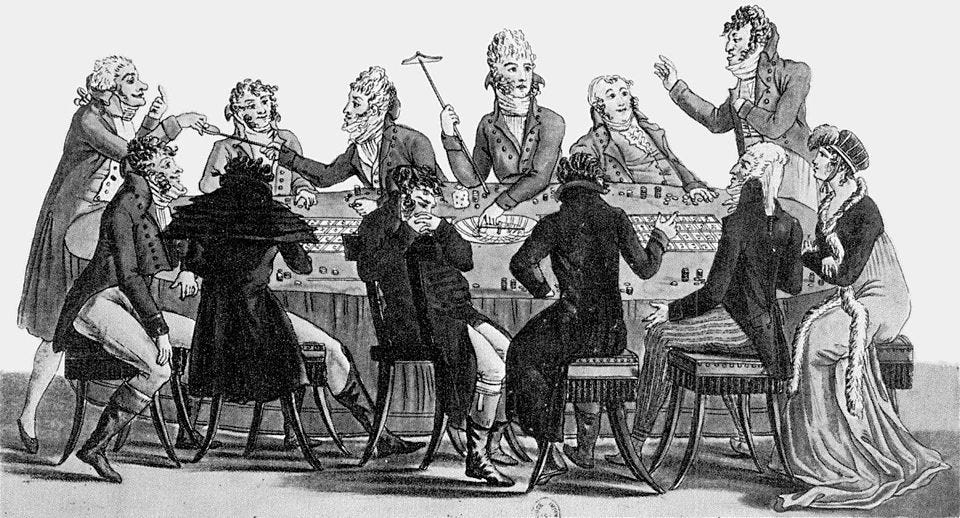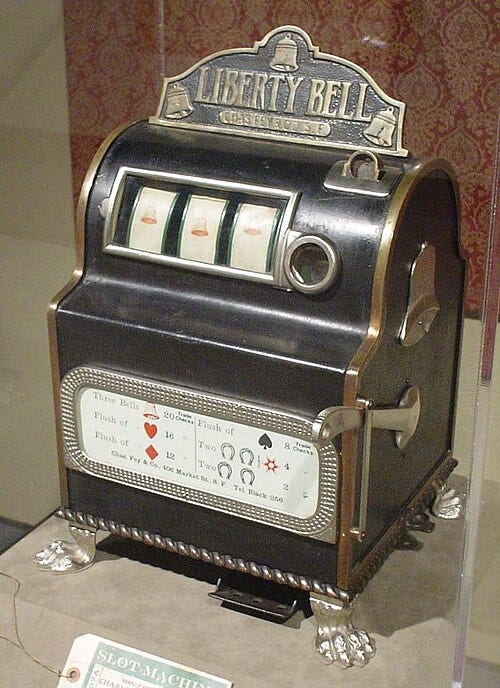The practice of gambling has been found in archeological dig sites dating to 3,000 BCE in Mesopotamia, while the games and payments have changed over the last 5,000 years the general practice has been the same since. The United States is no different, settlers of Jamestown came to the colony with cards and dice. The earliest form public gambling was the use of lotteries which raised funds for public projects. Games of Chance in taverns became commonplace as the East Coast became populated with more settlements. Puritan colonies cracked down on gambling due to the belief of it leading to immoral behavior. By the outbreak of the American Revolution, cities like Boston, New York, and Philadelphia drew taxation funds from these practices.

As the country entered the 19th century new venues of gambling became prominent, one was the riverboat casino became popular in the regions near the Mississippi River. A hub of entertainment, card games like blackjack or poker, and fine dining these boats were tailored to upper-class clientele. As the United States expanded westward gambling became an integral part of the frontier society. The classic scene of a cowboy entering a saloon to have a drink and rest, also more than likely played a few hands of poker while waiting for food. During this time, individuals began developing their skills to professional levels becoming notorious for cleaning small townsfolk of weekly wages. In 1891, the first slot machine became available to market. Known as the “Liberty Bell” these were by Charles Fey as an easier way of gambling.
By the turn of the 20th century, the prohibition of alcohol (1920-1933) created a surge in illegal gambling dens. This establishments known as speakeasies used games like roulette and craps to entertain patrons while they drank alcohol. These underground casinos became inter-connected with various criminal organizations that supplied the alcohol for the speakeasies, giving them a share of the house’s funds for protection. Nevada as a result of losing their mining industry, legalized casino gambling in 1931. By turning themselves into a tourist attraction, small cities like that of Las Vegas began to grow rapidly. Many of these new casinos built themselves around the ideas of keeping tourist as long as possible in the casino. This led to the primer of live shows consisting of musicians, comedians, and magicians to have people spend more time in the casino. The building of hotels to accommodate longer trips and finally the availability of food and drink in various restaurants inside the hotel/casino.
Following the end of the 2nd World War, the passage of the Nevada Gaming Control Act of 1959, led to the establishment of the Nevada Gaming Control Board. This board’s goals were to regulate and oversee the growing casino industry, to ensure fair play for both house and patrons, and prevent the infiltration of organized crime. Businessmen like Bugsy Siegel and Howard Hughes helped design the now famous Las Vegas Strip. Outside of Vegas, in the 1970s Atlantic City legalized casino gambling in an effort to become the Las Vegas of the east coast. by the 1980s resorts like that of Bally’s Caesars, and Trump Plaza dotted the boardwalk. The first Native American casino opened in 1979 in Fort Lauderdale, Florida, by the Seminole tribes. Following the passage of the Indian Gaming Regulatory Act of 1988, tribal casinos became a common sight across the country. By the end of the 1996, 25 states and 3 territories had various forms of these casinos.
As we entered the 21st century into the age of information, a new form of gambling has begun to take hold in houses across America. The development of online card games, sports betting, and apps that mirror slot machines has created a new wave of gamblers. In states where it is legal, those over the minimum age usually between 18-21, can from the comfort of their homes live bet on apps as a football game is being played. Many are unsure if this new technology is as innocent as portrayed in advertisements, now with unlimited access, those who previously gambled excessively still needed to physically go somewhere to do so. Now those people can lose thousands in mere minutes. The long-term ramifications of this are still unknown, but many believe it will create even more addicted to gambling at younger ages.






